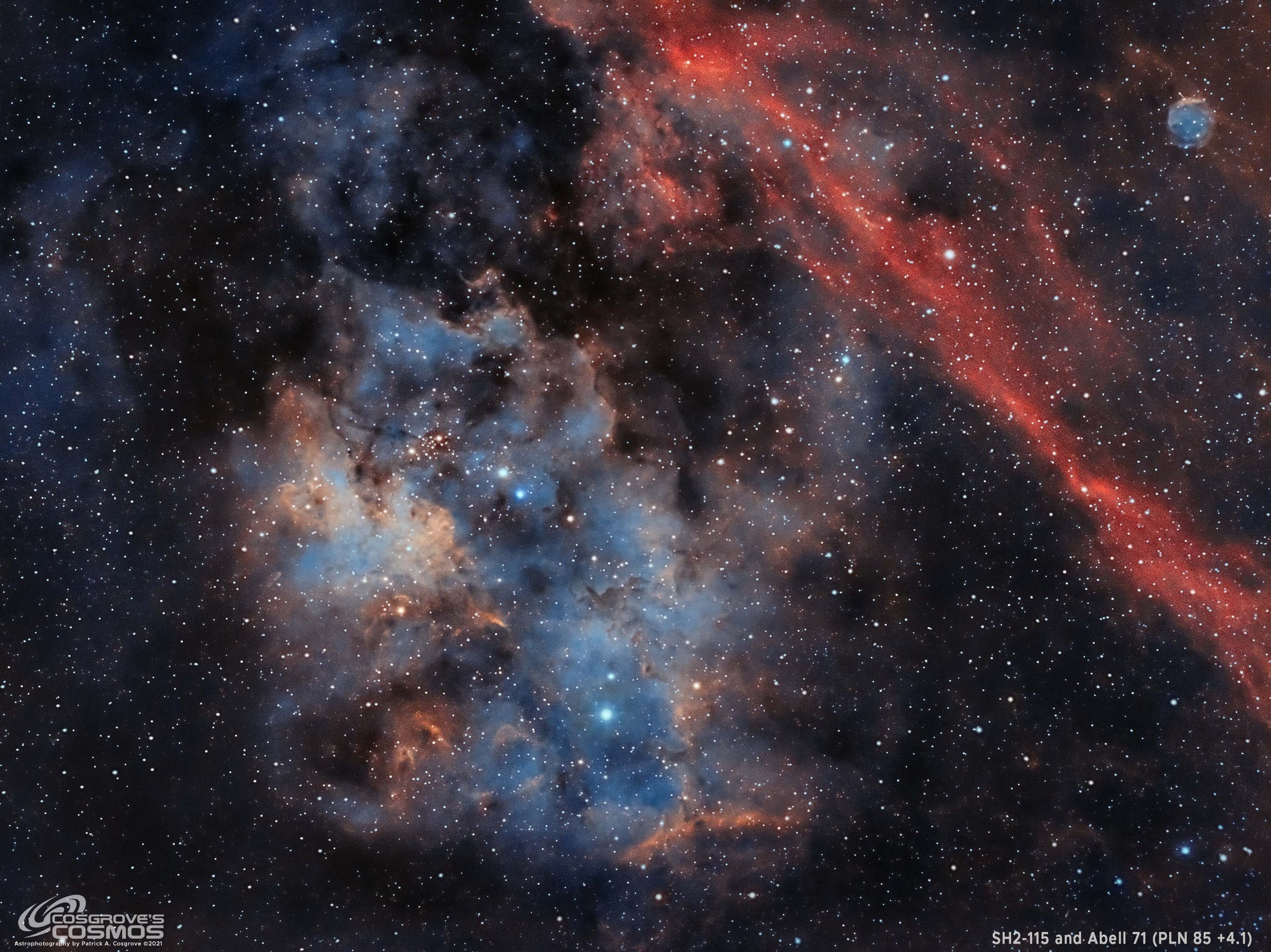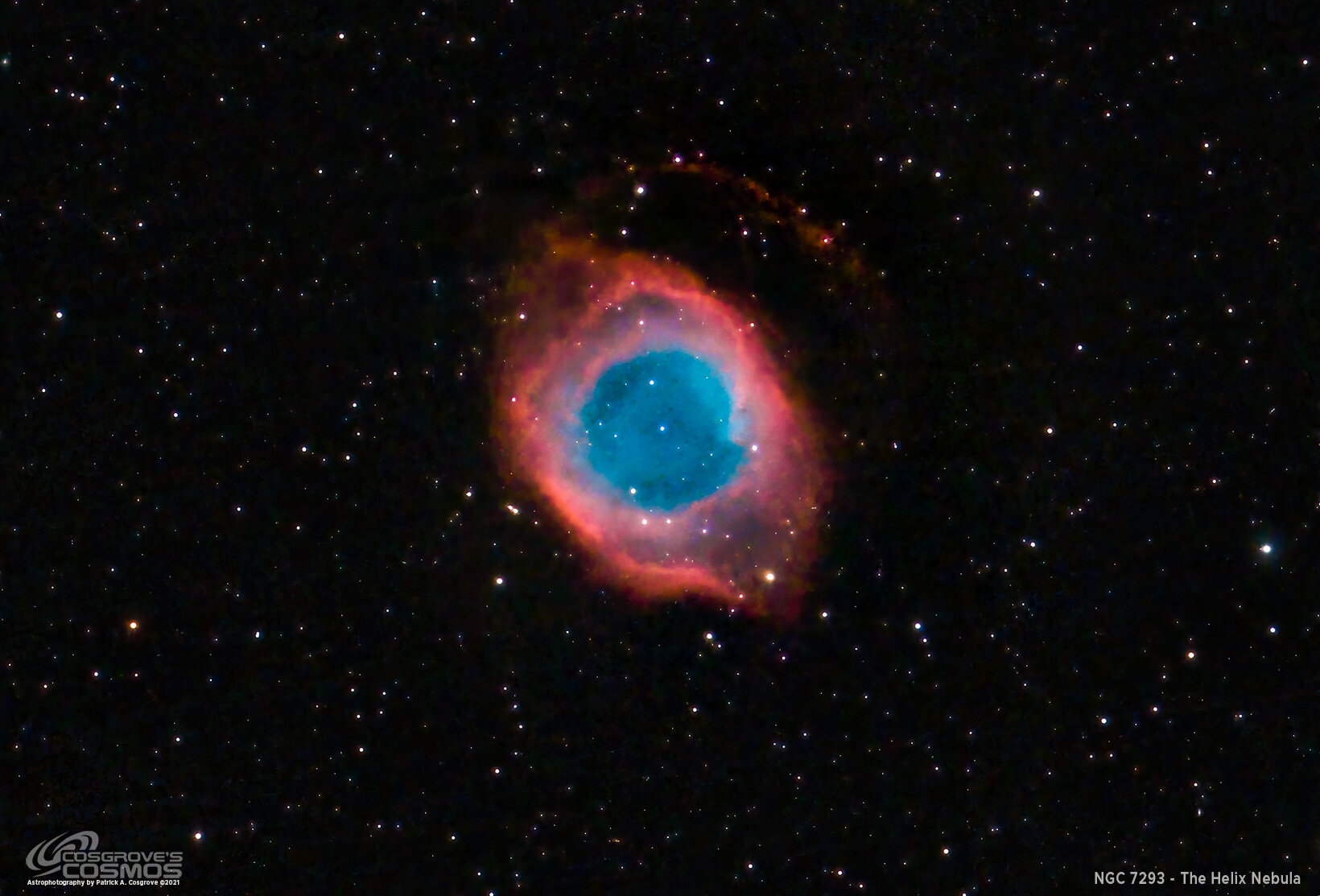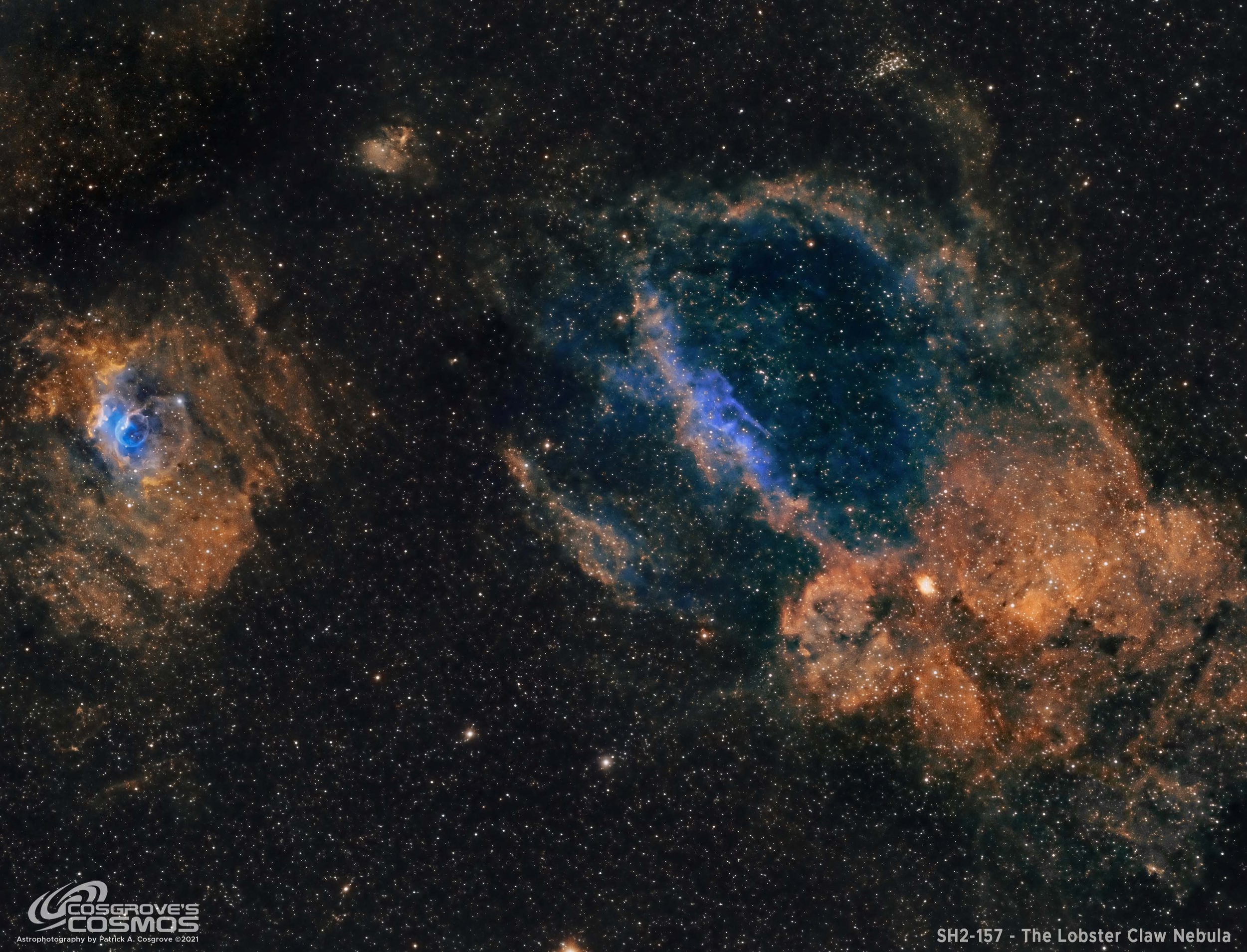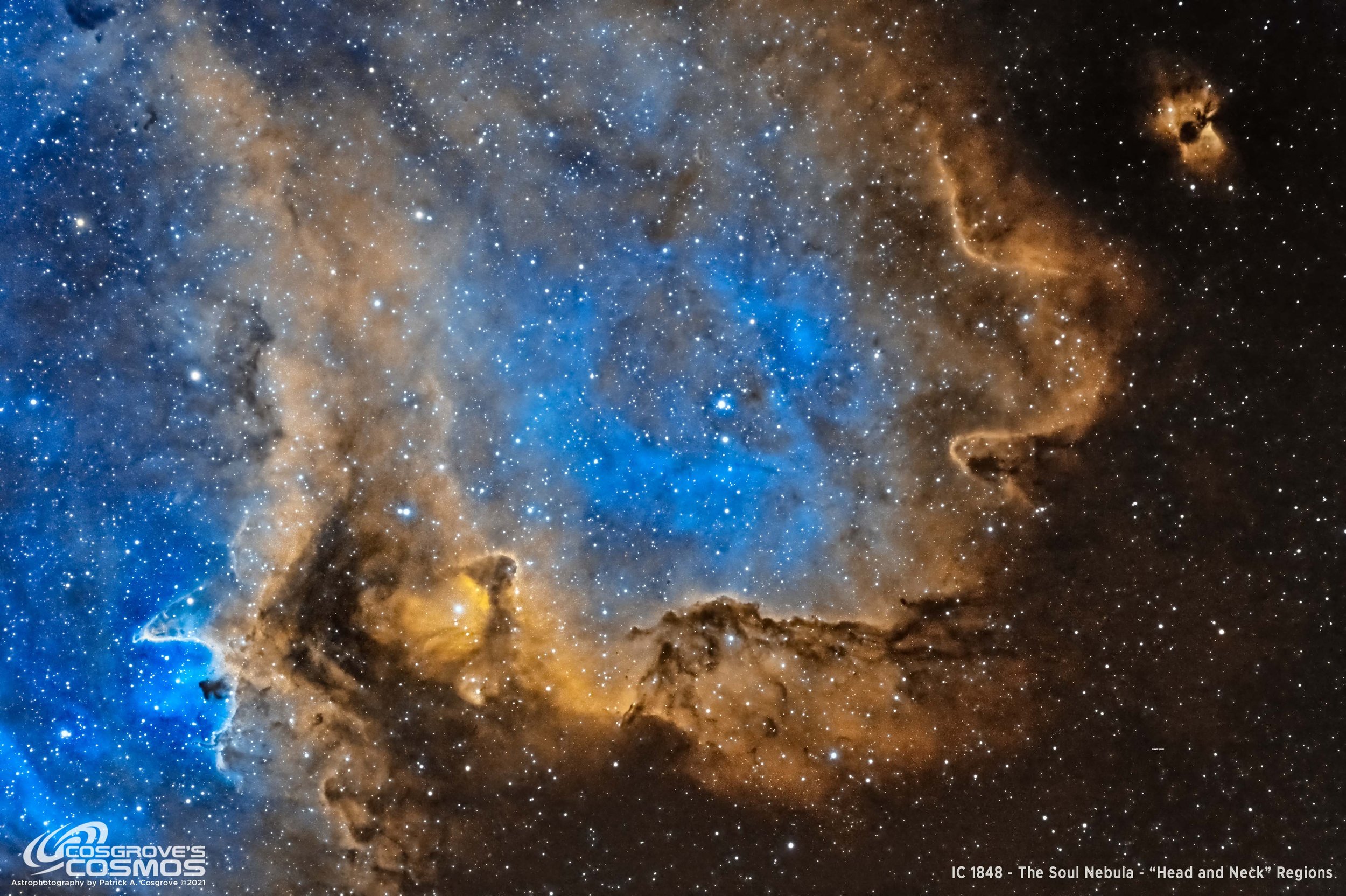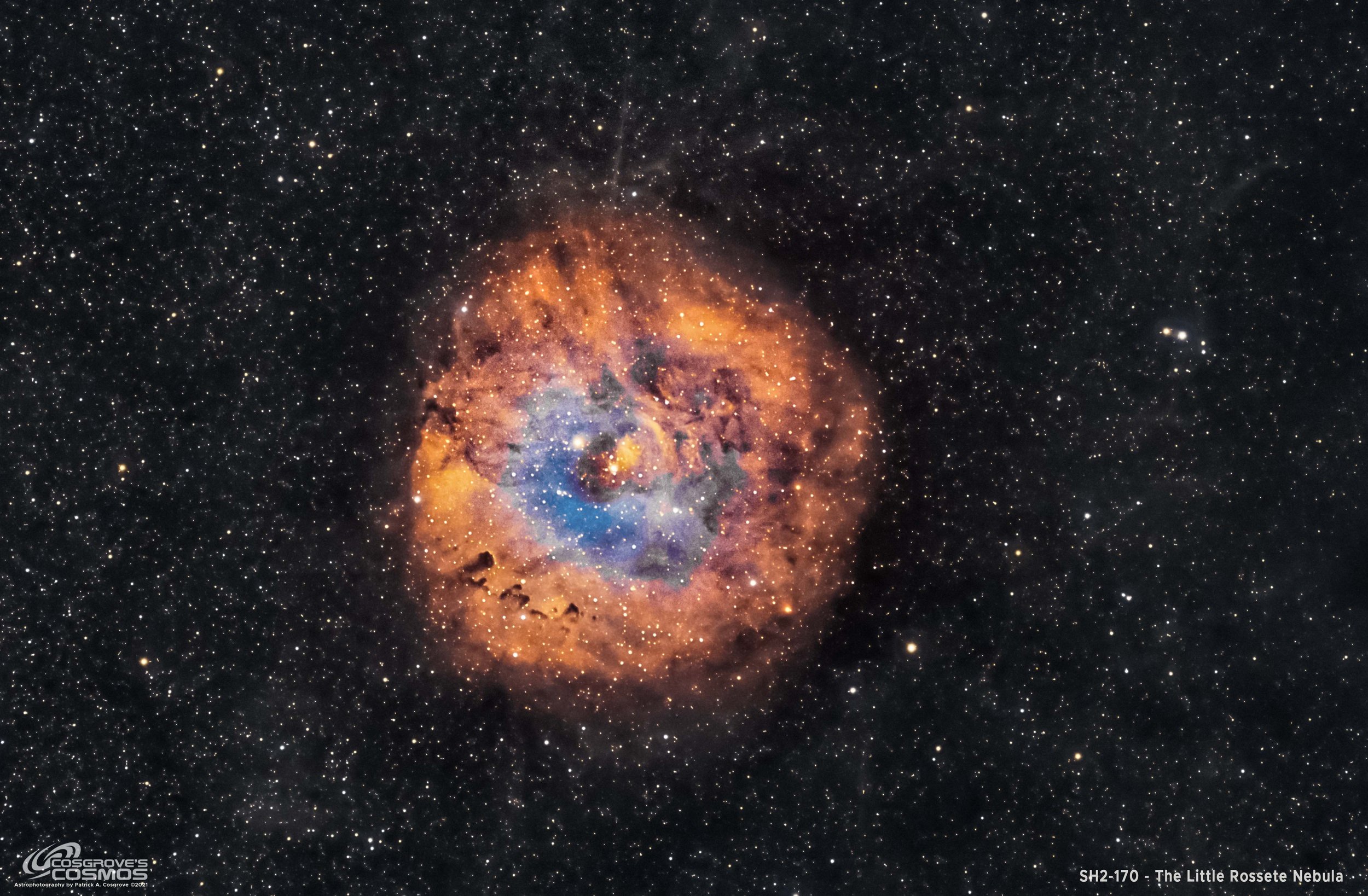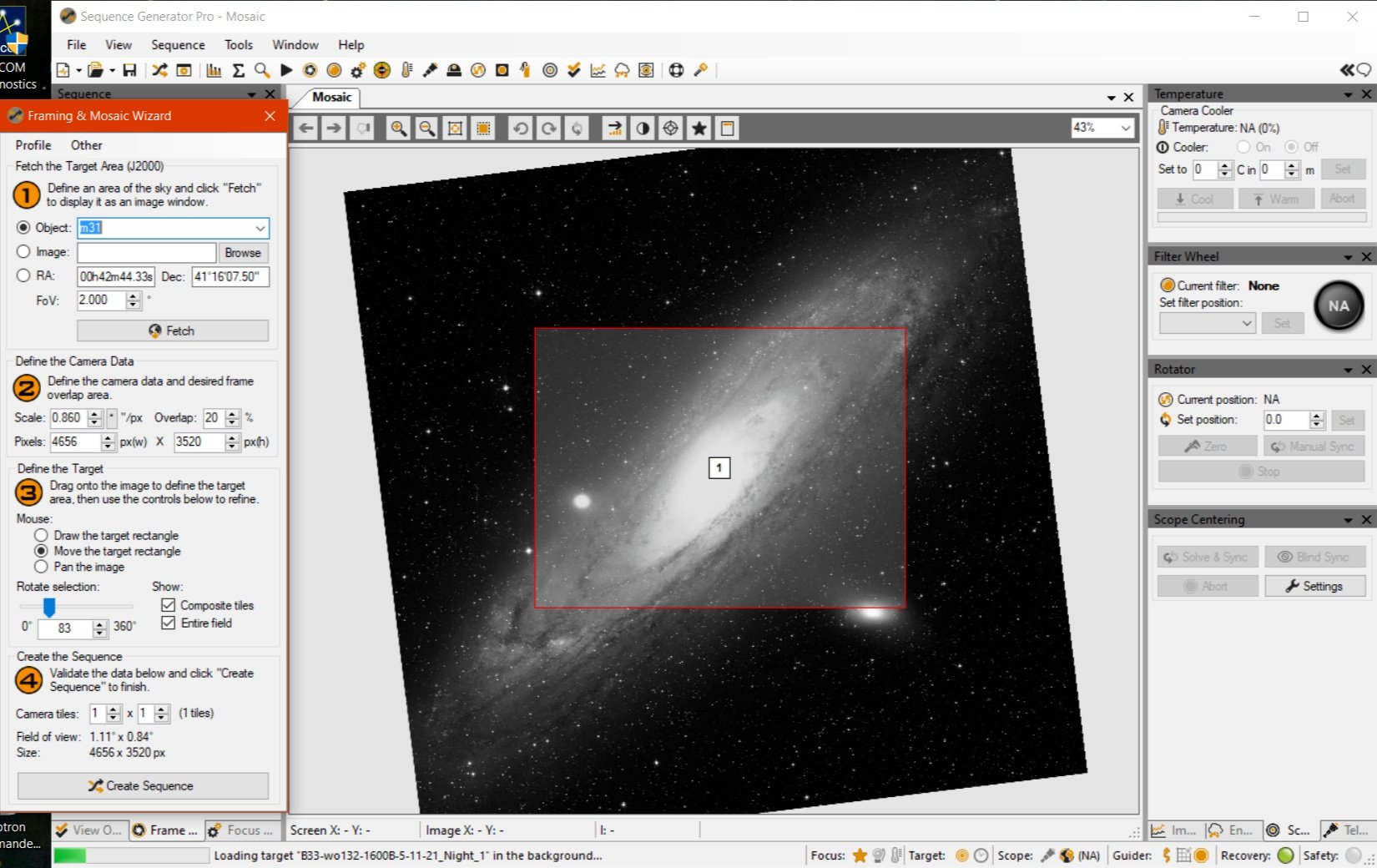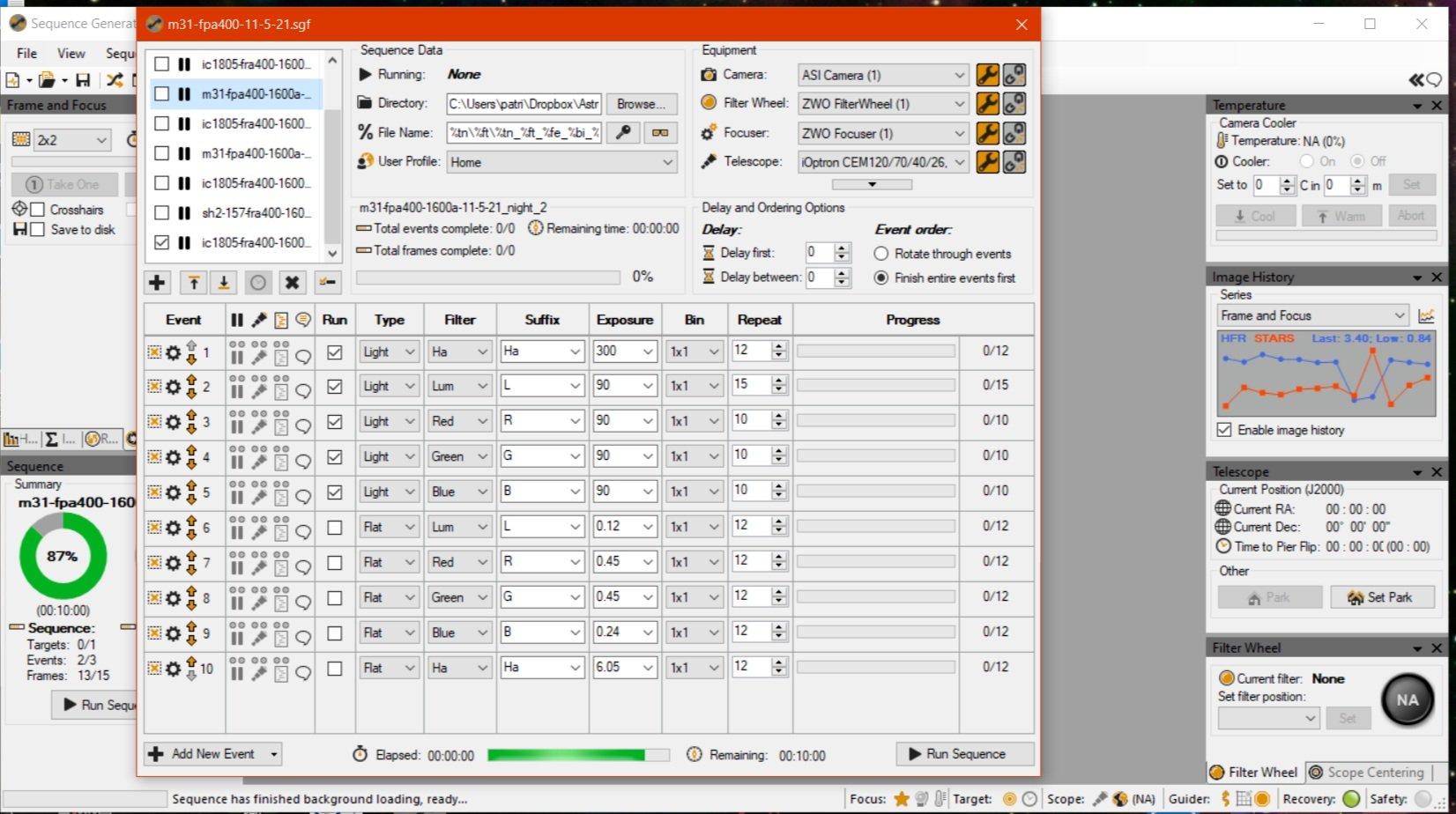Target Selection and Sequence Planning
Date: February 26, 2022
Table of Contents Show (Click on lines to navigate)
A Night to Remember
If you have followed any of my recent images, you will have heard me talk about the four-day stretch of decent weather we had here from November 4th-8th, 2021. It is rare when we get a clear night in this region during November - rarer still to get four full clear nights with no moon!
I clearly took advantage of that and need up with data collected on 10 different targets! This kept me busy with image processing for the next 2 months!
SH2-115 and Abell 71
NGC 7293 - The Helix Nebula
NGC 1499 - The California Nebula
SH2-157 - The Lobster Claw Nebula
IC 1848 - The Soul Nebula
B33 - The Horsehead and Flame Nebula
IC 63 - The Ghost of Cassiopeia
M31 - The Great Andromedia Galaxy
SH2-170 - The Little Rosette Nebula
IC 1805 - The Heart Nebula
I have had several people ask me how I ended up getting so much data over a few nights. I thought this might be a good topic for an article.
This was all due to the way I run my telescopes and how I plan and run my sequences. I thought I would run through what I do - keeping in mind that some of my circumstances are unique to me and how I operate at my site. However, perhaps you may find a few details or ideas that might work for you as well!
Caveat: I would certainly not position this as being the best way to go about planning - nor would I position this as being the most efficient way. It is simply what I do. It seems to work well for me and my circumstances - but your milage may vary!
With that said - let’s dive in!
How Did I End Up with Data from 10 Targets?
So how did I get so much data? How and why did I go after so many targets? Why not just grab one target per scope and grab all the data you can? Let’s explore the factor that drives both questions:
Long Nights! November is blessed with really long nights! It gets dark early and the sun comes up late. This time of year you can get almost 11 hours of darkness for gathering photons! This is almost 44 hours of integration time!
The length of the day and night in Rochester, NY. Taken from https://www.timeanddate.com/sun/usa/rochester
Three Scopes! I set up and run three telescope platforms in my driveway. So each platform can be collecting photons during this time. This gives me a total of 132 hours of potential integration time.
My three Telescope Platforms - all set up and ready for action!
Too Many Trees! I have way too many trees on my property! I tend to shoot down my driveway which parts the trees on my property and gives me access to a slice of sky that is just wide enough to get about 3 hours of capture per target. This is caused by the time the target rises above the eastern trees and before it sets behind the western trees! Depending on where the target is in the sky I can sometimes go 4 hours or more, but most of the time it is more limited. So for any given target, I can only integrate exposures for about 3 hours a night. This means that my 12-hour integration opportunity breaks down into about 4 windows each night for gathering target data. If I can get 3 hours a night for four nights, I can get around 12 hours per target. It also means that I can get 4 targets a night for their scopes - meaning that the max number of targets covered in a 4-day session is around 12!
The trees in my yard when facing south - I can only image a target once it rises above the trees on the East (left) side and before it sets in the trees in the west (right).
You End Up Wasting Time! Things conspire to take time away from photon capture:
When I set up, I have three scopes to position and polar align. I can’t really polar align until it’s dark enough for the PA camera to see the pole stars. By the time I do this for all scopes, I may eat up some of the early evenings.
Filter changes, autofocus runs, Meridian Flips, and so on, all act to reduce capture time.
Since I use a camera rotator and change the camera angle by target, I need to collect my flats for each night before changing to the next target. All of this takes time away from capture.
Finally, you need to have targets selected so that when you are ready for the next target its above the trees and ready to go. Sometimes this is not the case and you end up wasting more time waiting for the next target of the evening to become available!
So I ended up with 10 targets - not bad really considering everything going on for three rigs.
Planning!
So how do we end up with sequences that collect all of this data in some kind of controlled way? Planning!
For this all to work, you need to deal with:
Target selection
Telescope Allocation
Time Slot allocation
Sequence Setup
Let us explore each topic in turn.
Target Selection
Basically, I have two main approaches here.
The “Want List”: One resource for choosing a target is my “Want List”. This is a master list that I have built up over time where I collect targets that I am interested in going after. Sometimes these are targets that I have not shot and would very much like to add to my portfolio. Other times these are objects that I have shot before but would like to do again - perhaps using a different telescope or camera or method.
How do things get onto my “Want List”? There are a lot of different ways really.
I often look at the new content on Astrobin.com and that will cause me to add something to the list.
https://telescopius.com/ is a great resource for seeing what are good objects for a given time of year.
I sometimes scan the #Astrophotography Community on Twitter
Sometimes I peruse various object catalogs. What Messier Object have I not shot yet? Lately, I have been looking at the Calwell and the Sharpless Catalog. These objects are not as well known but often can be very interesting. Sometimes I will look through the ARP Catalog of Peculiar Galaxies.
One way or another, the target gets on my list. Once they are on the list, I sort them by the time of year that they are in the best position in the sky.
I will typically select objects from my “Want List” that should be good for the current time of year, and then I answer some key questions:
When will it be dark enough to start shooting?
When will it be too light to continue shooting?
When does each target in my Want List clear my eastern Tree Line at that time?
When does each target in my Want List set into the Western tree line?
The first two questions allow me to define the operational window for the evening. That window is then carved into rough 3 hour slices - this corresponds to the access time I get for any object between my tree lines. These times are easy to get from many sources, I often use https://www.timeanddate.com/sun/usa/rochester to guide me.
https://www.timeanddate.com/sun/usa/rochester Shows the key times for the various measure of twilight.
The second two questions allow me to define the access window for each object from my Want List which is in season. This gives me the puzzle pieces that I then have to fit together to generate a plan for the evening.
How do I know what the rise and set times will be?
For this, I use the App Stellarium. I mapped the boundaries to my tree lines by taking images along the tree line with an app that recorded the alt-azimuth coordinated for a target fiducial, and I created a table of Alz-Azimuth points that defined this boundary. I set this table up to be used by Stellarium so that I could show the tree lines in the night sky. I then set the time that I will begin shooting in Stellarium, find the object in question, and then by advancing the timeline I can work out when the object will clear the trees and then when it will set in the trees.
Here is the Stellarium view of the sky using the map of my tree lines. By advancing the date and time, can see when an object will rise above the trees on the eastern side of my property, and then when it will once again sink behind the tree line in the west.
Now I have a list of objects and the times they are available for shooting.
Telescope Allocation
I have three telescopes that I run at the same time. Each has its own focal length, f-ratio, and camera:
Williams Optics 132mm f/7.0 with a focal length of 920mm - running an older ZWO ASI1600MM-Pro Camera
Astro-Physics 130mm f/8.35 with a focal length of 1080mm - running a new ZWO ASI2600MM-Pro Camera
Askar FRA400 72mm F/5.5 with a focal length of 400mm - running an older ZWO ASI1600MM-Pro Camera
These are different tools that I use for different jobs.
The Askar FRA400 has the shortest focal length and therefore the widest field of view (400mm), so I tend to use it for large targets like emission nebula.
The Williams Optics 132mm is has a mid-range focal length (925mm). It can handle a lot of targets.
The Astro-Physics 130mm with the next generation ASI2600 camera has the longest focal length (1080mm) and the most efficient camera. I tend to use this for galaxies and other smaller items.
Field of View for M31 for the Askar FRA400 (focal length of 400mm) with ZWO ASI1600MM-Pro Camera
Field of View for M31 for the William Optics 132mm (focal length of 925mm) with ZWO ASI1600MM-Pro Camera
Field of View for M31 for the Astro-Physics 130mm (focal length of 1080mm) with ZWO ASI2600MM-Pro Camera
So now I look at the list of possible target objects and check their angular size. This allows me to do a preliminary mapping of objects to a telescope that would be a good match for that object.
I can get the size in many ways. Sometimes, I use Stellarium’s data field when an object is selected. Sometimes I do a web search. When I am done with this, I will have many of the telescope time blocks filed and some still open. I can’t allow any time to go without capturing photons, so now I need to identify targets of opportunity to fill those slots.
Targets of Opportunity
I now have the start of a shooing plan, with initial targets allocated to a specific telescope platform and assigned to a given time slot. So far I have been working “target forwards.” In other words, I start with a target and fit it into the shooting plan.
To complete the list I now need to work “time slot backwards.” In this case, I take a time slot that is empty for a given scope and I need to see what is rising from my trees at that point in time and find something that might be interesting to image.
For the unallocated telescope time blocks, I use Stellarium to see what constellation is rising from the eastern tree lines at the start time for the block. Once I know what constellations are in play, I look for objects in those constellations that might be good targets. In general. I tend to do this in two ways.
The first way is using Stellarium. I look at the plot of the constellation in question and see what objects are shown there. Selecting that object tells me what it is and what angular size it has. Based on this, some of those objects could be selected as potential targets.
Another way of doing this is using Astrobin.com. I can select a constellation and then show images from objects that come from that particular constellation. If I see one I like, I can add it to my list of possible new targets.
Astrobin.com has an explore feature that allows you to select “Constellations”. You can then select the constellation of interest and Astrobin will show you images that have been taken by others in that constelation!
Here is an example image display for the Constellation Cygnus. On the left you can add filter moderators if you wish to fine tune the list displayed. You can then select any image get more information for that object. This is a great planning tool!
For each new potential item, I can then determine the rise and set times using Stellarium. With this information, I can do the telescope allocation and see if it fits the open slots in my list.
The Final Plan
With all of this done, I have a shooting plan for each telescope that starts when darkness arrives and the gear is set up and goes on through the night until it is time to shut down. I’d like to say that not a minute of time is wasted but such planning is not so efficient.
Sometimes my start and times are off. I know about when the trees are cleared or entered again, but the tree line is pretty fractal and I can be off sometimes for as much as 10 minutes.
Sometimes, I can’t find a good object that I want to shoot when the next window opens. I may end up waiting an extra 20 minutes or even an hour until the next target is up far enough to shoot. Sometimes I may end up leaving a window unused if I can’t find a target I am excited about shooting.
Sometimes, the time it takes to grab flats for a given camera rotation takes longer than I would like. Perhaps for some reason, I am not hitting my aim flat code values and I need to re-assess the exposure - taking more time than I had planned for.
Sometimes, a few clouds can come through and mess up part of my plan. Sometimes this is obvious - as in the guide star is lost and the sequence shuts down. In other cases, it’s not so obvious. Thin clouds can come through that won’t shut you down but will reduce the quality of some subs to the point where they are no longer useful.
These things happen and as an Astrophotographer - especially one located in the Western portion of New York State - you just have to roll with it!
Finally - it is important to keep in mind that the plan for one night is not optimal for me. Since I can only get about 3 hours a night for an object - I really need to execute this same plan for several nights in a row in order to accumulate the integrations I need for a target.
Creating the Sequence
Once I have my shooting plan in hand, I need to set up the sequences that will control things. I use Sequence Generator Pro to control my sequences.
The day before I start capture, I create the sequence files that will control the process. I use a dedicated laptop for each telescope platform to run things - each running SGP. So for each target, I will use the Framing and Mosaic Wizard to set up the composition for each shot.
An example shot of the SGP Framing and Mosaic Wizard being used to set up image composition. Both X and Y positioning as well as camera rotation can be adjusted to get the composition desired. This information is then baked into the sequence you will build. SPG handles centerting of the scope on this location with camera rotation, leveraging Plate Solving to confirm the framing.
I then add in sequence events to control data gathering for each filter to be used. If this is a galaxy, I typically will capture LRGB and Ha subs. If it is a nebula, I typically capture Ha, O3, and S2 subs. Sometimes I also capture short RGB subs in addition so that I can get RGB stars to add to my SHO image. I try to get a balanced set of subs for each filter for each night. This way if I only get 2 good nights instead of three, I still have a balanced set of subs allowing me to create a color image to work with. If I am lucky, I just run the subs for even more evenings than planned.
Here is the sequence I set up for the M31 target. I have light frames for LRGB and Ha. These are active and are ready to go. Also seen are the flat images for each filter. These are not selected yet, and will only be selected once the flats are done for the evening. Typically I will also shoot flat darks right after the flats are shot.
I also create sequence events that will allow me to capture my flats and flat darks.
With the sequence plan for each object ready to go, I am all set for darkness to fall, getting my scopes set up and aligned. I am ready to keep the scopes as busy as possible catching those elusive photons, knowing that I have a plan to drive the next few nights!
Conclusion
Trying to keep 3 telescopes fed with Targets throughout the night can be a challenge. Planning and preparation are extremely important to pulling this off. While the plan is never perfect and things don’t always go to plan - doing the homework and preparation is really important to maximize the data you collect!
Some day I hope to have an observatory that will not be plagued by trees restricting my view of the night sky. When that happens, my plans will be much simpler, because my time blocks on each object will be much longer. until then, my planning process helps me to deal with the site limitations I have.
I hope some of this gives you some ideas on how you might better work your planning process!
Clear Skies!
Pat


